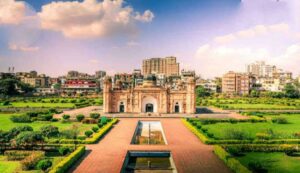

Hedgewar Hospital Auranagabad

Aurangabad Maharashtra
Places To Visit In Aurangabad
Aurangabad is a city in Maharastra state in India. The city is a tourism hub, surrounded by many historical monuments, including the Ajanta caves While Aurangabad is known for the kind of industrial production and companies that provide employment to the local people the city is known for being the tourism hub of Maharashtra It has been surrounded by many historical monuments and structures like Bibi ka Mqbara and Aurangabad certainly prospered as Khadki under the rule. Malik Amber as he managed to spend money and his men would support the city well
PLACES TO VISIT IN AURANGABAD
- Bibi ka Maqbara
- Aurangabad Caves
- Ellora caves
- Pitalkhora Buddhist caves
- Pitalkhora Buddhist caves
Bibi Ka Maqbara
The Bibi Ka Maqbara is a tomb located in Aurangabad, Maharashtra,
India. It was built by Mughal Emperor Shah Jahan’s grandson
and Aurangzeb’s son Muhammad Azam Shah
Meanwhile in memory of his beloved mother ‘Rabia-ul-Daurani’ alias ‘Dilras Bano Begum’.
It was commissioned in 1660 by the Mughal emperor Aurangzeb in memory of his wife Dilras Banu Begum and is considered to be a symbol
of Aurangzeb’s ‘conjugal fidelity’.
However, it bears a striking resemblance to the Taj Mahal, the mausoleum of Aurangzeb’s mother, Mumtaz Mahal.
Aurangzeb was not much interested in architecture though he had commissioned the small, but elegant, Pearl Mosque in Delhi.
Aurangabad Caves
Aurangabad caves are twelve rock-cut Buddhist shrines located on a hill running roughly east to west, close to the city of Aurangabad, Maharashtra.
The first reference to the Aurangabad Caves is in the great chaitya of Kanheri Caves.
Aurangabad Caves were dug out of while comparatively soft basalt rock during the 6th and 7th centuries.
Caves are divided into three separate groups depending on their location: these are usually called the “Western Group”, with Caves I to V, the “Eastern Group”,
with Caves VI to IX, and a “Northern Cluster”, with the unfinished Caves X to XII.
The carvings at the Aurangabad Caves are notable for including a Hinayana-style stupa, Mahayana artwork, and the Vajrayana goddess.
These caves are among those in India that show 1st millennium CE Buddhist artwork with goddesses such as Durga, and gods such as Ganesha,
although Buddhist caves in other parts of India with these arts are older.
Ellora Caves
Ellora is a UNESCO World Heritage Site located in the Aurangabad of Maharashtra, India.
It is one of the largest rock-cut Hindu temple cave complexes in the world, with artwork dating from the period 600–1000 CE.
Cave 16 features the largest single monolithic rock excavation in the world, the Kailash temple, a chariot-shaped monument dedicated to the god Shiva.
The Kailash temple excavation also features sculptures depicting various Hindu deities as well as relief panels summarizing the two major Hindu epics.
There are over 100 caves at the site, all excavated from the basalt cliffs in the Charanandri Hills, 34 of which are open to the public.
These while consisting of 17 Hindu, 12 Buddhist, and 5 Jain caves, where each group representing deities and mythologies prevalent in the 1st millennium CE
Places To Visit In Aurangabad
Pitalkhora Buddhist Caves
The Pitalkhora Caves, in the while Satmala range of the Western Ghats of Maharashtra, India, is an ancient Buddhist site consisting of 14 rock-cut cave monuments.
which date back to the third century BCE, making them one of the earliest examples of rock-cut architecture in India.
Located about 40 kilometers from Ellora, then the site is reached by a steep climb down a flight of concrete stairs, past a waterfall next to the caves.
Pitalkhora Buddhist Caves
The Pitalkhora while Caves, in the Satmala range.
of the Western Ghats of Maharashtra, India, is an ancient Buddhist site consisting of 14 rock-cut cave monuments.
which date back to the third century BCE,
while making them one of the earliest examples of rock-cut architecture in India.
Located about 40 kilometers from Ellora, then the site is reached by a steep climb down a flight of concrete stairs, past a waterfall next to the caves.
Places To Visit In Aurangabad
The Aurangabad offers unique insights into how art interfaced
with Buddhist practice in the western Deccan during the first 700 years of the Common Era.
However, by relating the evidence available at Aurangabad
While what where we see in other rock-cut sites and evidence available at Aurangabad.
what we see in other rock rock-cut sites of Ajanta Aurangabad can’t be automatic.
associated with the rest.
Introduction
Aurangabad, a city in the Indian state of Maharashtra, is a place of historical and cultural significance. Named after the Mughal Emperor Aurangzeb, it is known for its rich heritage, remarkable monuments, and a blend of Mughal and Maratha architecture. This document explores the history, culture, tourism, economy, and other aspects of Aurangabad in detail.
History
Aurangabad has a long and illustrious history that dates back to ancient times. The city was originally known as Khadki when it was established by Malik Ambar, the prime minister of the Nizam Shahi dynasty, in 1610. It later became an important center under the Mughal Empire when Emperor Aurangzeb made it his capital in the 17th century.
Aurangzeb ruled from Aurangabad for a significant period and used it as a strategic location for his campaigns in the Deccan. Post-Mughal rule, the city came under the control of the Nizams of Hyderabad before becoming part of India in 1948 after Hyderabad State’s merger.
Geography and Climate
Aurangabad is located in the Marathwada region of Maharashtra and lies on a plateau surrounded by hills. The city experiences a semi-arid climate with three main seasons:
- Summer (March to June): Hot and dry, with temperatures reaching up to 40°C.
- Monsoon (June to September): Moderate rainfall with lush green landscapes.
- Winter (October to February): Pleasant and cool, with temperatures dropping to around 10°C, making it the best time to visit.
Tourism
Aurangabad is often referred to as the Tourism Capital of Maharashtra, primarily due to its proximity to two UNESCO World Heritage Sites: Ajanta and Ellora Caves.
1. Ajanta Caves
Ajanta Caves, about 100 km from Aurangabad, date back to the 2nd century BCE. These 30 rock-cut Buddhist cave monuments feature stunning frescoes, murals, and sculptures depicting the life of Buddha.
2. Ellora Caves
Located around 30 km from Aurangabad, Ellora Caves are a blend of Hindu, Buddhist, and Jain temples carved into rock. The highlight is the Kailasa Temple, a monolithic structure dedicated to Lord Shiva.
3. Bibi Ka Maqbara
Often called the “Mini Taj Mahal,” Bibi Ka Maqbara was built by Aurangzeb’s son Azam Shah in memory of his mother, Dilras Banu Begum. It resembles the Taj Mahal and is one of Aurangabad’s most visited sites.
4. Daulatabad Fort
Once known as Devagiri, Daulatabad Fort is an architectural marvel featuring strong defensive walls, intricate passageways, and strategic positioning. It was a prominent military base in medieval times.
5. Grishneshwar Temple
Grishneshwar Temple, near Ellora, is one of the twelve Jyotirlingas dedicated to Lord Shiva. The temple’s architecture and spiritual significance make it a must-visit place.
6. Panchakki
Panchakki, a 17th-century water mill, showcases the ingenuity of medieval engineering. It was built to generate energy using water power for grinding grain and other uses.
7. Salim Ali Lake and Bird Sanctuary
This serene lake, named after the famous ornithologist Dr. Salim Ali, is home to various migratory birds and serves as a great spot for nature lovers.
Culture and Festivals
Aurangabad has a diverse and vibrant culture influenced by Mughal, Maratha, and local Maharashtrian traditions. Marathi is the predominant language spoken, along with Urdu and Hindi.
The city celebrates numerous festivals, including:
- Ganesh Chaturthi – A grand celebration dedicated to Lord Ganesha.
- Diwali – The festival of lights celebrated with enthusiasm.
- Eid – A significant festival for the Muslim community.
- Ellora Ajanta Festival – A cultural extravaganza featuring music, dance, and art performances near the historic caves.
Economy and Industry
Aurangabad is a major industrial hub in Maharashtra, with a strong presence of manufacturing, automotive, and textile industries.
1. Manufacturing and Automobiles
The city is home to several automobile giants, including Bajaj Auto, Skoda, and Audi, contributing significantly to the local economy.
2. Textile Industry
Aurangabad has a rich tradition of textile production, especially Paithani sarees, which are famous for their intricate designs and luxurious silk.
3. Tourism and Hospitality
The tourism sector plays a crucial role in the city’s economy, with numerous hotels, restaurants, and travel businesses thriving due to the influx of domestic and international visitors.
Education and Institutions
Aurangabad has emerged as an educational hub, with numerous universities and research institutions, including:
- Dr. Babasaheb Ambedkar Marathwada University (BAMU) – A prominent university offering various courses.
- MGM University – Known for its engineering, medical, and management studies.
- Government Medical College – One of the best medical institutions in the region.
Transport and Connectivity
Aurangabad is well-connected by road, rail, and air:
- Roadways: The city has excellent road connectivity with Mumbai, Pune, and Nagpur via national highways.
- Railways: Aurangabad railway station connects it to major Indian cities.
- Airways: The Aurangabad Airport offers domestic flights to Mumbai, Delhi, and Hyderabad, with plans for international expansions.
Future Development and Smart City Initiatives
Aurangabad has been selected under India’s Smart Cities Mission, leading to infrastructure development, better urban planning, and improved civic amenities. Key projects include:
- Metro and Public Transport Upgrades
- IT and Industrial Parks
- Tourism Infrastructure Development
Conclusion
Aurangabad stands as a city rich in history, culture, and economic potential. Its blend of ancient heritage and modern growth makes it a significant location in Maharashtra and India. Whether for tourism, business, or education, Aurangabad continues to be a beacon of development and historical pride.
With its world-famous monuments, growing economy, and vibrant cultural scene, Aurangabad remains a must-visit destination that beautifully captures India’s glorious past and promising future.
DO CHECK THIS ARTICLE TOO
Best Places To Visit In Jodhpur
FOR MORE INFO

